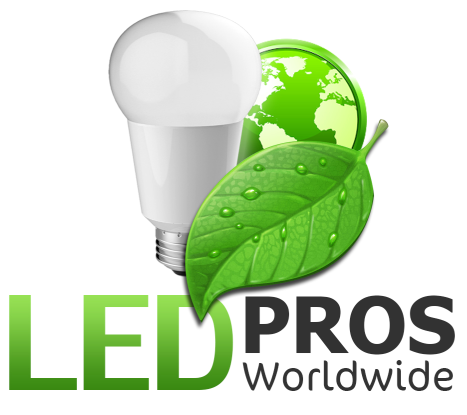Chip on board LED modules vs discrete array was puzzling until I found this excellent article. If you are interested in learning where the LED industry is heading and why, this article does a first-rate job of explaining the advantages of chip on board LED.
Until recently, a lighting designer looking to take advantage of the efficacy, longevity, and robustness of LEDs for his/her next luminaire was faced with some key challenges.
Among the toughest of these was the need to work out how many discrete LEDs were required to achieve the required “lumen density” (light output per unit area) for the product, and then design a circuit board that took into account the power- and thermal-requirements of this array without consuming too much space inside the lamp. Then the engineer needed to make sure that all of the LEDs in the group produced an identical color to meet the consumers’ expectations.
Today, a simpler solution is at hand. LED makers have introduced a new form of packaging for their high-power devices: the chip-on-board (COB) LED array. In supplying these units, the LED maker has done the work of matching the individual LEDs and designing a suitable substrate to carry the “light engine.” Better yet, COB LED arrays allow LED makers to take advantage of efficiency-enhancing techniques such as “remote phosphor”.
Drawbacks of discrete LED arrays
Although the performance of LEDs has improved dramatically, single devices still do not produce enough output for a mainstream lighting application. This presents problems because of the physical space that the LEDs take up (typically measuring several square centimeters). Moreover, grouping LEDs into arrays also introduces challenges from illumination, optical, and manufacturing viewpoints.
Optimizing the quality of the light from an LED array is difficult. LED manufacturers sort LEDs into ‘bins’ of approximately the same color correlated temperature (CCT) and luminosity, but closely matching individual devices so that the consumer notices no difference becomes expensive and time consuming.
A second problem with a large array of LEDs is that the devices age at different rates. Many of the LEDs in a fixture could have plenty of life left while the others have dimmed, resulting in the consumer junking the unit. Finally, assembling an array of many LEDs is difficult and labor intensive, further pushing-up costs. (See the TechZone article “LED Packaging and Efficacy Advances Boost Lumen Density.”)
Eliminating assembly
To address the problems of designing and then assembling an LED array, LED makers now offer a modular solution in the form of a COB LED array. Such a device delivers both a ceramic package and a high level of integration.
COB LED arrays eliminate the need for lighting manufacturers to place individual LEDs on a printed circuit board (PCB) or have someone put them on a board for them. Another advantage that can ease the manufacturing process is that COB packages are suited to manual assembly. The COB can be stuck with epoxy or mechanically engaged to the heatsink without requiring a lot of engineering resources.
Commercial COB LED arrays
Major LED manufacturers have introduced families of commercial COB LED arrays. Cree has recently launched a COB LED lighting array that it calls the XLamp CXA solution. The company claims this is a breakthrough technology that doubles the system intensity of spotlights compared to previous arrays. The company says that the first product released in the family, the CXA1520 LED, enables lighting manufacturers to create products that deliver the same luminosity as a 39 W ceramic metal halide device but using up to 50 percent less power.
The growth of COB
The cost-saving advantages of COB LED arrays compared with using discrete LEDs, designing a circuit board to carry them, and then assembling the unit are compelling for luminaire manufacturers. Such advantages are driving the dramatic growth of the sector.
According to the analyst firm Research & Markets, the COB LED market is forecast to grow at a compound annual growth rate (CAGR) of 40.71 percent over the period 2013 to 2018. Apart from the other advantages, the company says one of the key factors contributing to this market growth is the declining price of LEDs. Much of the increased demand is driven by mainstream lighting applications.
Even if the forecasters’ numbers are somewhat optimistic, the COB LED array sector is likely to grow significantly in the next several years. Expect to see more LED makers launch products in the very near future.
Your message has been sent
